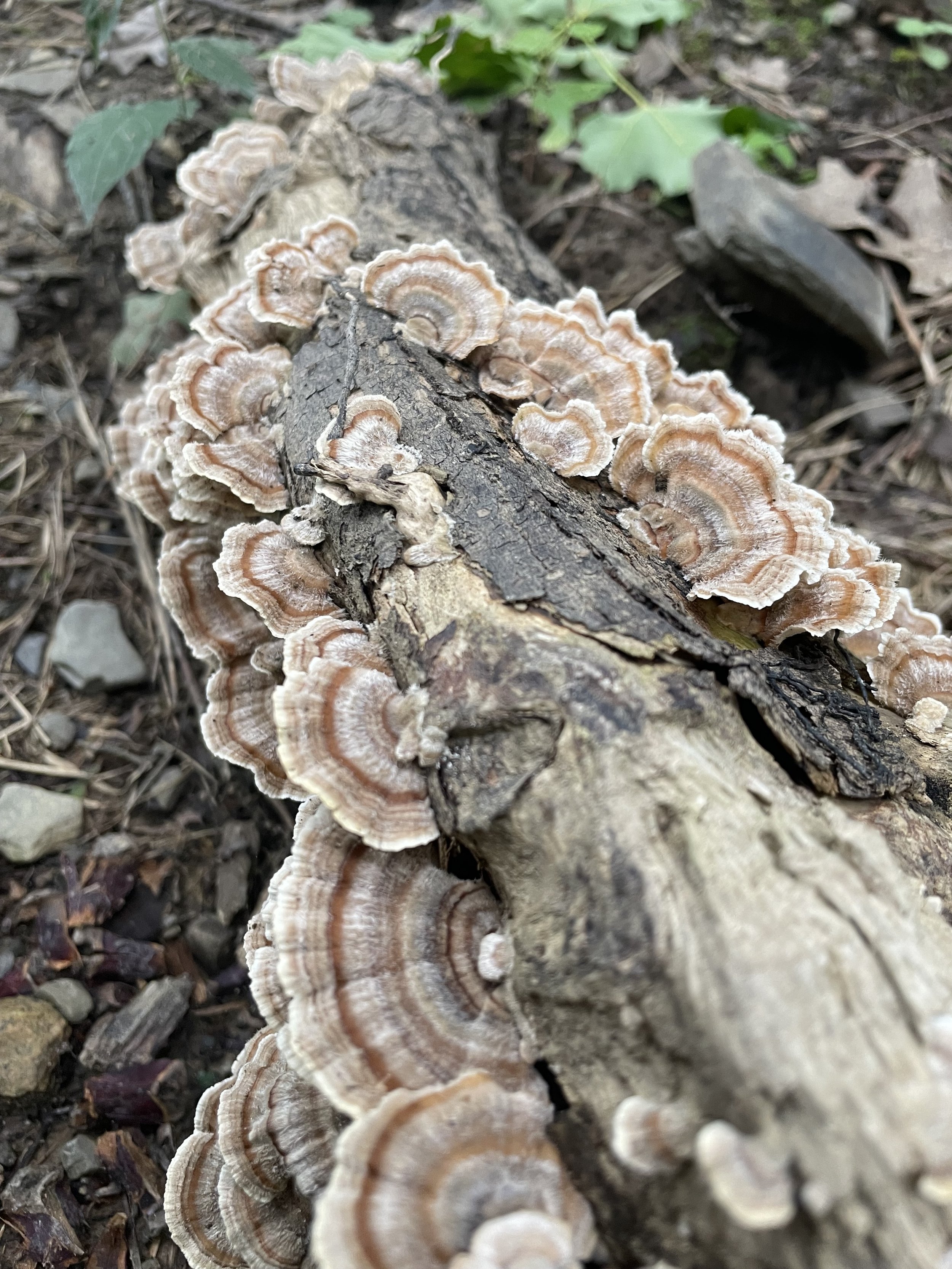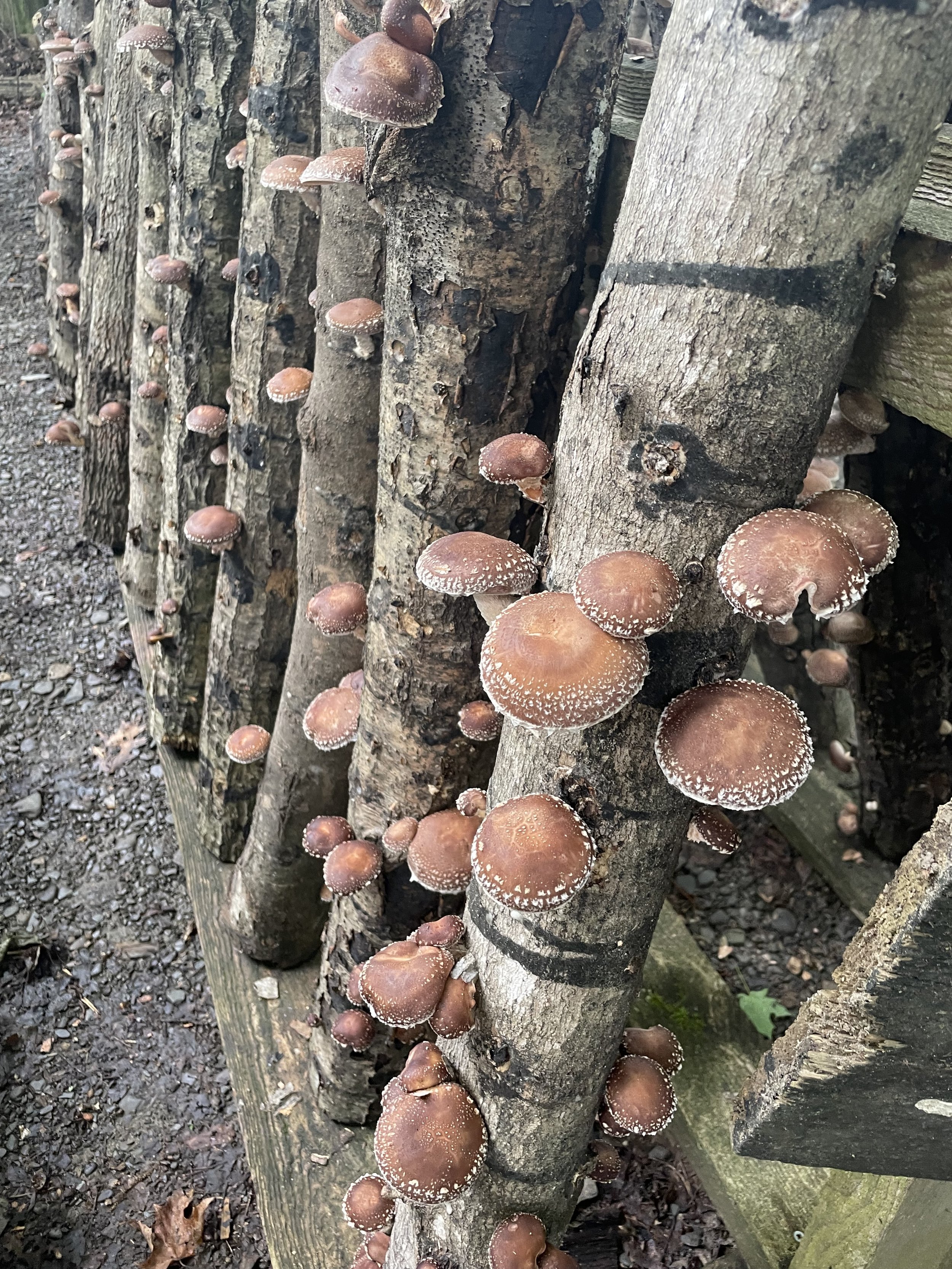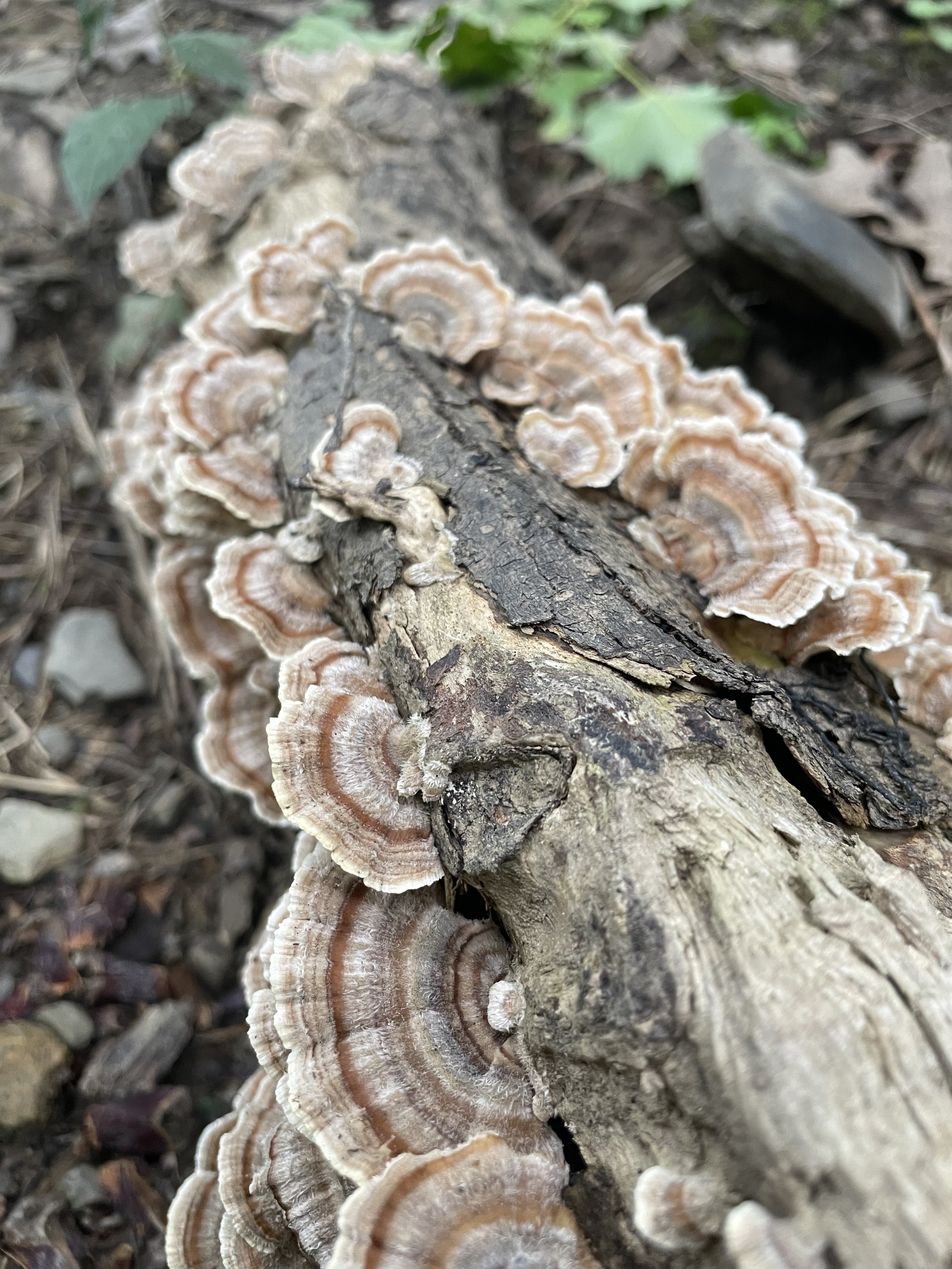
This blend is formulated to support immune health, gut health, and overall vitality. Each mushroom contributes unique compounds that work synergistically to promote balance and resilience in the body. Anyone looking to support their immune system, gut health, or general well-being — especially during times of stress, travel, or seasonal changes.
The combination of the mushrooms provides a powerful suite of potential benefits, including:
Shiitake: Rich in beta-glucans and lentinan, supports immune function, heart health, and has antiviral properties.
Oyster: Contains ergothioneine and lovastatin, supporting antioxidant defense, cardiovascular health, and inflammation modulation.
Turkey Tail: Known for polysaccharopeptides (PSP & PSK), it’s a powerful immune modulator and gut microbiome supporter.
How do I take this tincture?
Take 1–2 droppers daily under the tongue or mixed into a drink. Consistency is key — daily use helps maintain benefits over time. All three mushrooms are edible and well-researched. Daily use is common. However, if you’re immunocompromised or on medications, consult a healthcare provider first.
What does it taste like?
It has an earthy, savory flavor typical of mushrooms, with some mild bitterness from the extraction. Mixing it into tea, broth, or juice can make it more palatable.
How is the tincture made?
We use a dual-extraction method (hot water + alcohol) of only whole fruiting mushrooms we grow and forage to ensure both water-soluble and alcohol-soluble compounds are captured for maximum potency.
How should I store it?
Store it in a cool, dry place away from sunlight. No refrigeration needed. Properly stored, it can last 2+ years.
Medicinal Mushroom Blend: Shiitake, Oyster & Turkey Tail – Research Citations
🧪 1. Wasser, S. P. (2002)
Title: Medicinal mushrooms as a source of antitumor and immunomodulating polysaccharides
Journal: Applied Microbiology and Biotechnology, 60(3), 258–274
Summary: A comprehensive overview of immune-boosting polysaccharides in cultivated mushrooms including Shiitake, Oyster, and Turkey Tail. Discusses extraction methods and mechanisms of action.
🔗 https://doi.org/10.1007/s00253-002-1076-7
🍄 2. Jayakumar, T., et al. (2011)
Title: Experimental and clinical pharmacology of Lentinula edodes (Shiitake mushroom): a review
Journal: Journal of Traditional and Complementary Medicine, 1(1), 49–55
Summary: Reviews active compounds in Shiitake including lentinan (water-soluble beta-glucan) and eritadenine (cholesterol-lowering agent).
🔗 https://doi.org/10.1016/S2225-4110(16)30069-0
🌿 3. Cheung, L. M., et al. (2003)
Title: Antioxidant activity and total phenolics of edible mushroom extracts
Journal: Food Chemistry, 81(2), 249–255
Summary: Compares antioxidant activity of water and ethanol extracts in cultivated mushrooms including Shiitake and Oyster. Shows benefits of dual extraction.
🔗 https://doi.org/10.1016/S0308-8146(02)00419-3
🦠 4. Fisher, M., & Yang, L. X. (2002)
Title: Anticancer effects and mechanisms of polysaccharide-K (PSK) from Turkey Tail
Journal: Anticancer Research, 22(3), 1737–1754
Summary: Explores PSK, a hot-water-extracted polysaccharide from cultivated Turkey Tail, with strong evidence for immunomodulation and oncology support.
🔗 PubMed Link
🧬 5. Eliza, W. L., et al. (2002)
Title: Effects of Yun Zhi (Coriolus versicolor) on cell cycle and apoptosis in human breast cancer cell line MCF-7
Journal: Cancer Letters, 193(1), 67–75
Summary: Supports Turkey Tail's medicinal use with evidence of immune activity and anticancer mechanisms via polysaccharopeptides.
🔗 https://doi.org/10.1016/S0304-3835(02)00046-4
🍽️ 6. Mattila, P., et al. (2002)
Title: Sterol and vitamin D2 contents in some wild and cultivated mushrooms
Journal: Food Chemistry, 76(3), 293–298
Summary: Includes ergosterol levels in cultivated Shiitake and Oyster mushrooms, relevant for antioxidant and cholesterol-lowering potential.
🔗 https://doi.org/10.1016/S0308-8146(01)00285-X
🧫 7. Patel, Y., et al. (2012)
Title: Medicinal properties of Pleurotus species (oyster mushroom): a review
Journal: World Journal of Fungal and Plant Biology, 3(1), 1–12
Summary: Focuses on Pleurotus species, highlighting their antimicrobial, antioxidant, and anti-inflammatory effects.
🔗 ResearchGate PDF
🔍 8. Zervakis, G. I., et al. (2014)
Title: A critical approach to the evaluation of dietary supplements: the case of medicinal mushrooms
Journal: International Journal of Medicinal Mushrooms, 16(1), 1–17
Summary: Evaluates supplement efficacy and extraction methods in commonly cultivated mushrooms, including all three species.
🔗 https://doi.org/10.1615/IntJMedMushrooms.v16.i1.10
💧 9. Zhang, Y., et al. (2007)
Title: Comparative study of polysaccharide and triterpenoid content in dual-extracts of medicinal mushrooms
Journal: International Journal of Medicinal Mushrooms, 9(3), 283–289
Summary: Assesses dual-extraction efficacy across species, relevant to Shiitake and Turkey Tail tincture preparations.
🔗 https://doi.org/10.1615/IntJMedMushrooms.v9.i3.70






